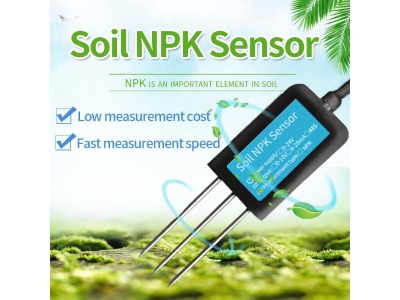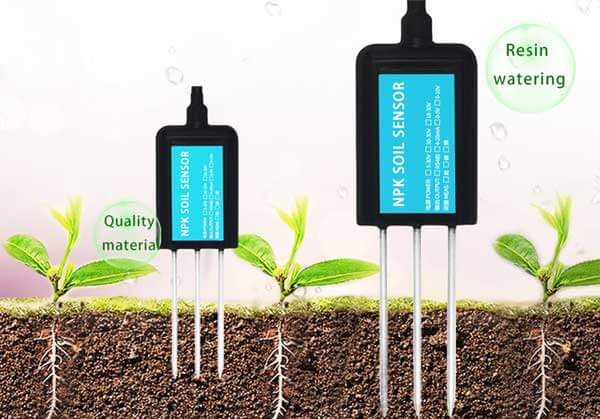Soil moisture is a crucial factor in agriculture, horticulture, and environmental management. Understanding soil moisture levels is essential for optimizing irrigation, conserving water resources, and ensuring plant health. Soil sensors have emerged as valuable tools for monitoring soil moisture levels accurately and efficiently. This article delves into the importance of soil sensors in monitoring soil moisture, discussing their applications, benefits, and future developments.

The Significance of Soil Moisture Monitoring :
Soil moisture refers to the amount of water present in the soil, which directly affects plant growth, agricultural productivity, and ecosystem health. Both excess and insufficient soil moisture can have detrimental effects on plants. Overwatering can lead to root rot and nutrient leaching, while underwatering can impair plant growth and yield.
The Role of Soil Sensors in Monitoring Soil Moisture :
Soil sensors play a vital role in monitoring soil moisture by measuring the water content in the soil. They provide real-time data on soil moisture levels, enabling farmers, horticulturists, and researchers to make informed decisions about irrigation scheduling, water management, and crop health.
There are different types of soil sensors available, including capacitance sensors, tensiometers, gypsum block sensors, and time domain reflectometry (TDR) sensors. These sensors are typically installed at various depths in the soil profile to capture a comprehensive picture of moisture availability.
Applications and Benefits of Soil Sensor-Enabled Soil Moisture Monitoring :
Soil sensor-enabled soil moisture monitoring offers numerous benefits across various fields. In agriculture, farmers can optimize irrigation schedules based on real-time soil moisture data, minimizing water waste and maximizing crop yield. This leads to improved water use efficiency, reduced energy costs, and increased profitability.
In horticulture, soil sensors help monitor soil moisture for different plant species, ensuring optimal growing conditions. They enable precise irrigation management, preventing over or under-watering, which can lead to plant stress and damage. This improves plant health, reduces water consumption and enhances resource sustainability.
Soil moisture monitoring with sensors is also crucial in environmental management and research. It helps assess the impact of land-use changes, climate change, and land restoration efforts on soil moisture dynamics. The data collected from soil sensors can be used to develop water resource management strategies, mitigate drought impacts, and enhance ecosystem resilience.
Future Developments and Challenges :
Soil sensor technology is continuously evolving, offering promising future developments in soil moisture monitoring. The integration of soil sensors with wireless networks and Internet of Things (IoT) platforms allows real-time, remote monitoring and data collection. This enables farmers and researchers to access soil moisture information from anywhere, improving decision-making capabilities.
However, challenges exist that need to be addressed. Calibration and maintenance of soil sensors are critical to ensure accurate and reliable measurements. Sensors should be calibrated based on soil properties and specific crop requirements. Additionally, sensor placement and installation techniques should be standardized to ensure consistent and comparable data.

Furthermore, ongoing research is needed to enhance sensor accuracy and performance, especially in challenging soil conditions such as high clay content or salinity. Improvements in sensor durability, battery life, and cost-effectiveness will also drive wider adoption of soil sensor technology.
Conclusion :
Soil sensors play a pivotal role in monitoring soil moisture, enabling precise irrigation management, water conservation, and improved crop productivity. By providing real-time soil moisture data, these sensors empower farmers, horticulturists, and researchers to make informed decisions and optimize resource use.
With ongoing advancements in soil sensor technology, such as wireless connectivity and improved accuracy, the future of soil moisture monitoring looks promising. Integrated solutions with IoT platforms and data analytics will further enhance data collection and interpretation, facilitating better water management strategies and sustainable agriculture practices.
By digging deeper into soil moisture levels, we can unlock insights that promote efficient water use, enhance food production, and support environmental sustainability. Soil sensors are key tools in this endeavor, enabling smarter decision-making and contributing to a more resilient and productive agricultural sector.
